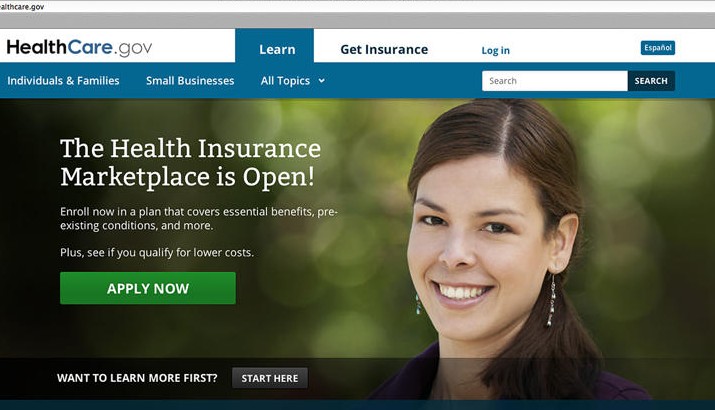WASHINGTON (AP) — The debut of the government’s health insurance marketplaces drew a huge audience — and underwhelming reviews.
Videos By Rare
Just 7 percent of Americans say the rollout of the health exchanges has gone extremely well or very well, according to an AP-GfK poll.
The reaction was somewhat better among supporters of the new health care law, but still middling: 19 percent said the rollout went extremely well or very well.
Among the uninsured — a key audience for the health exchanges — 42 percent said they didn’t know enough to judge how well the rollout had gone, suggesting an ongoing lack of awareness about the program in its early days.
Despite the bumpy rollout, plenty of Americans are giving the system a try.
Seven percent of Americans reported that somebody in their household has tried to sign up for insurance through the health care exchanges, according to the poll.
While that’s a small percentage, it could represent more than 20 million people.
Three-fourths of those who tried to sign up reported problems, though, and that’s reflected in the poor reviews.
George Spinner, 60, a retired government worker from Ruther Glen, Va., said he managed to create an online account and password before he got stuck.
“It kept telling me there was an error,” he said.
Reynol Rodriguez, a computer technician from San Antonio, said he was able to do some comparison shopping online but computer glitches kept him from signing up.
“I was very much looking forward to it,” said Rodriguez, 51. “That’s what this country needs — affordable health care.”
Rodriguez pledged to keep trying — just what President Barack Obama has been recommending to those who’ve run into trouble.
Count Janice Brown, a semiretired travel agent from Prather, Calif., among those who had a positive experience.
After some initial trouble on the website, she got through to a help line and downloaded an application to buy a plan for $1,500 a month for herself and her husband. That’s $1,000 less than her current private plan.
“I’m thrilled,” said Brown, 61. “The coverage is better. It’s fantastic.”
Among those who’ve actually tested out the system, only about 1 in 10 succeeded in buying health insurance, the poll found. A quarter of those who tried to buy coverage weren’t sure whether they’d succeeded.
Overall, 40 percent of Americans said the launch of the insurance markets hasn’t gone well, 20 percent said it’s gone somewhat well and 30 percent didn’t know what to say. Just 7 percent said the launch had gone “very well” or “somewhat well.”
Even among those who support the president’s health care overhaul law, just 19 percent think the rollout has gone extremely well or very well. Forty percent say it’s gone somewhat well, and 18 percent think not too well or not well at all.
The survey offers an early snapshot on use of the new health insurance exchanges set up by states and the federal government under Obama’s Affordable Care Act. Thirty-six states are using the federal government’s site, HealthCare.gov, which the Obama administration says has had millions of unique visitors. The administration has declined to release enrollment statistics, saying that will be done monthly.
White House senior communications adviser Tara McGuinness said the administration is working around the clock “to improve the consumer experience,” and she stressed that the poll was taken just six days into a campaign over the coming months to educate people about their options.
She added, “The overwhelming attention from millions of Americans checking out HealthCare.gov during the first few days is a good testament to the interest of Americans in new affordable health options.”
The Congressional Budget Office has estimated that about 7 million uninsured people will gain coverage through the online insurance marketplaces next year, but the role of the markets is actually much bigger than that.
They were intended to be a 21st century portal to coverage for people who do not have access to health insurance on the job. And that includes insured people as well as the uninsured.
There are three big groups of potential customers for the markets: uninsured middle-class people who now will be able to get government-subsidized private coverage; people who currently purchase their own individual policies and are looking for better deals; and low-income people who will be steered by the marketplace to an expanded version of Medicaid in states that agree to expand that safety net program.
The Census Bureau has estimated that about 48 million Americans lacked coverage in 2012, or more than 15 percent of the population.
Starting next year, the law requires virtually all Americans to have insurance or face a tax penalty after a coverage gap of three months.
Opinions are sharply divided on the overall framework of the law: 28 percent of Americans support it, 38 percent are opposed, and 32 percent don’t have an opinion either way, the poll found. When asked specifically whether the government should be able to require all Americans to buy insurance or face a fine, only about 3 in 10 Americans agreed, and 68 percent were opposed.
The AP-GfK Poll was conducted Oct. 3-7 using KnowledgePanel, GfK’s probability-based online panel. It involved online interviews with 1,227 adults. The survey has a margin of sampling error of plus or minus 3.4 percentage points for all respondents. For results among the 76 respondents who attempted to use health insurance markets, the margin of error is plus or minus 13.5 percentage points.

